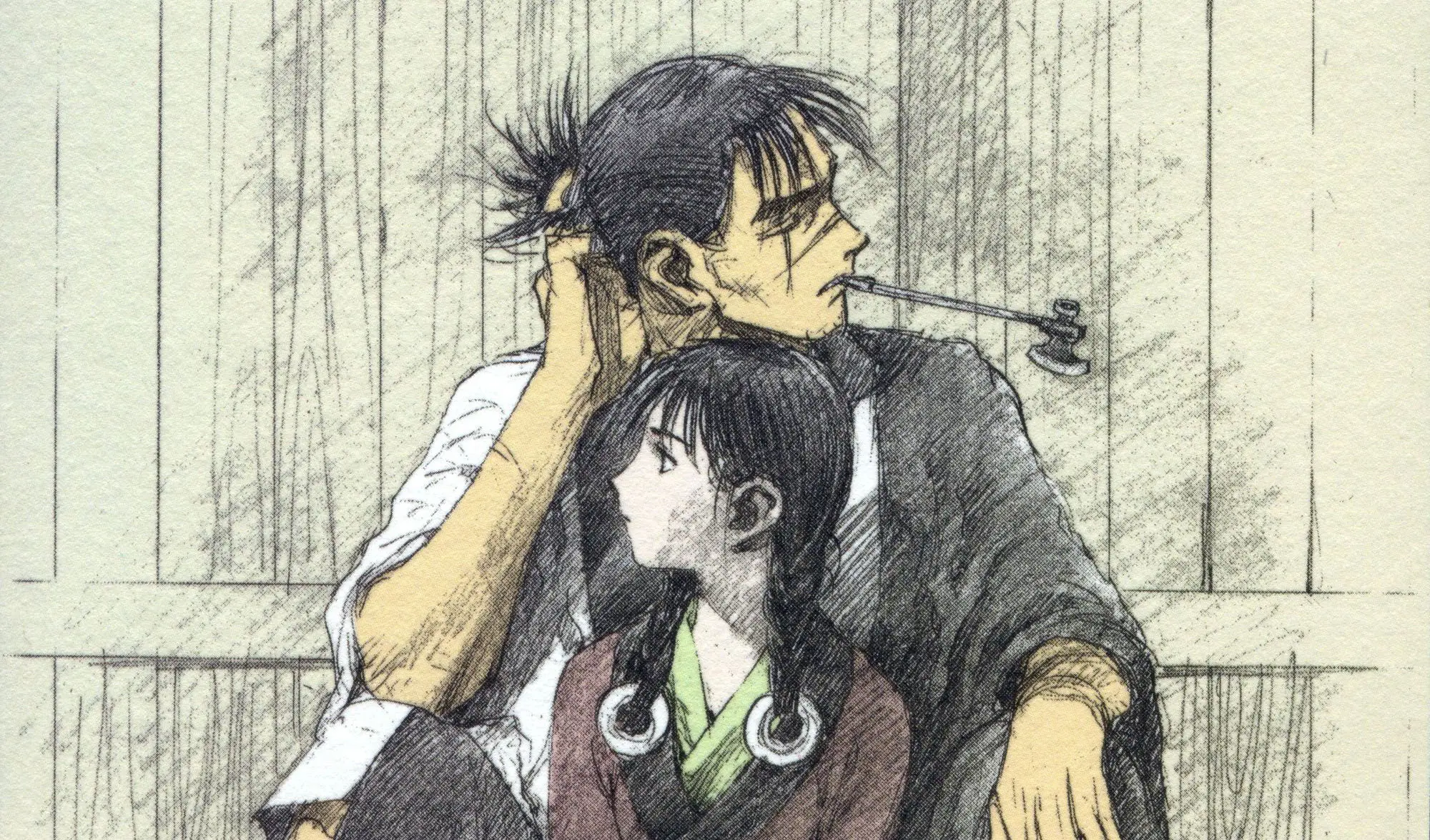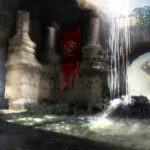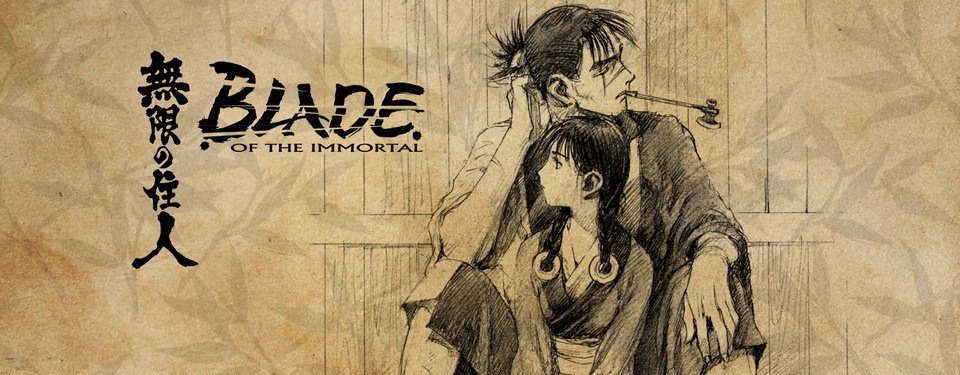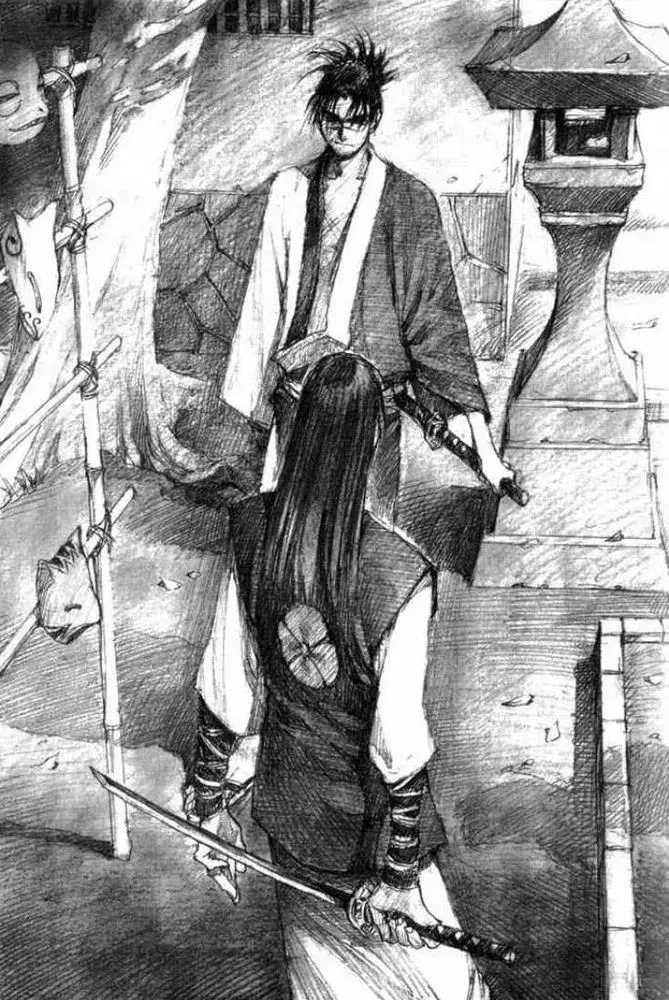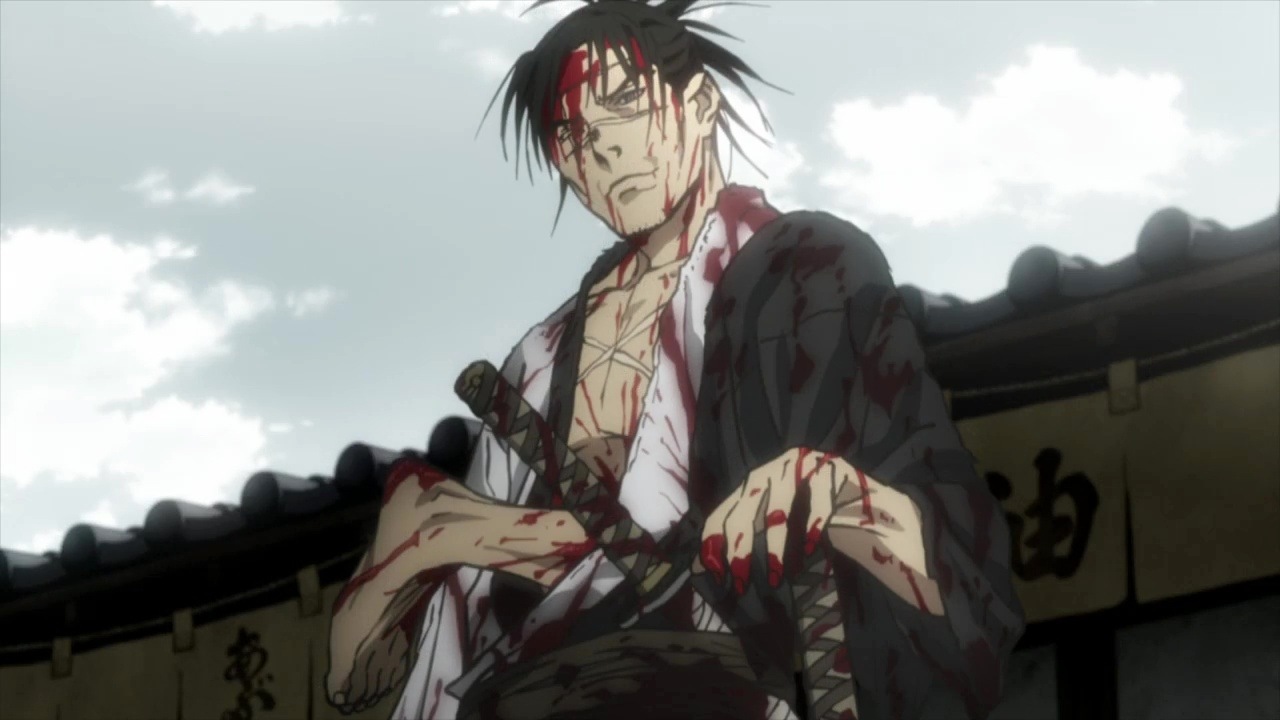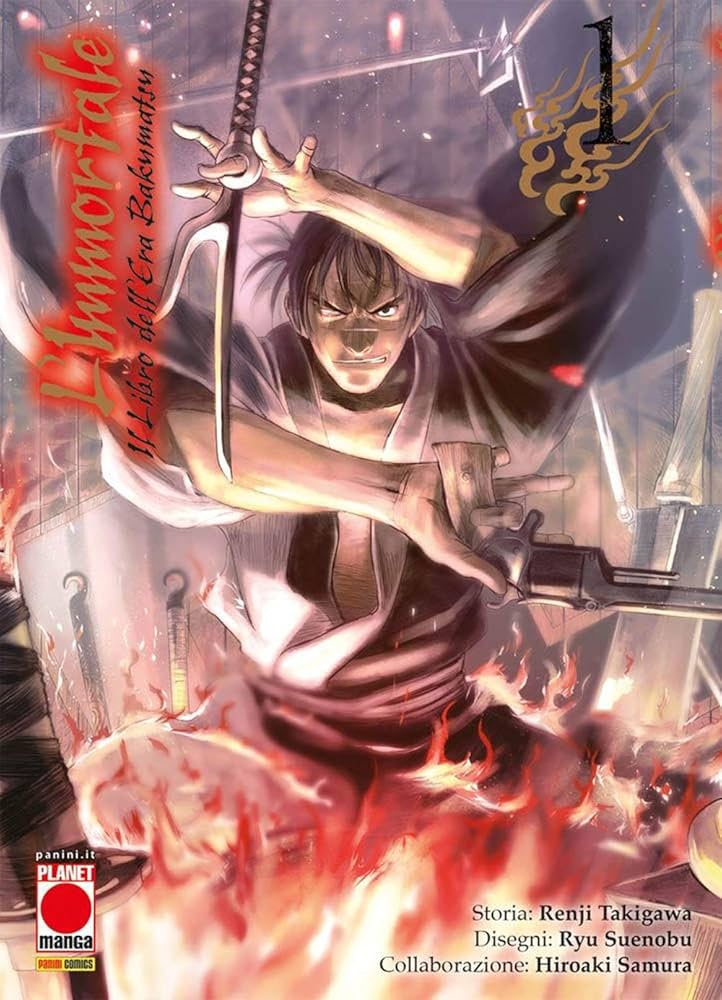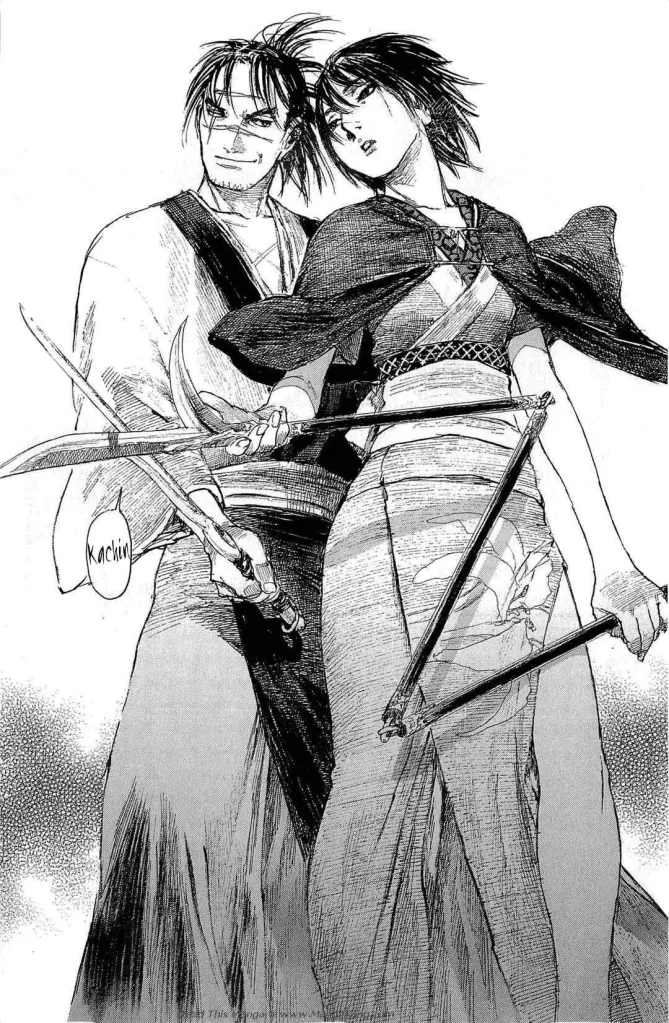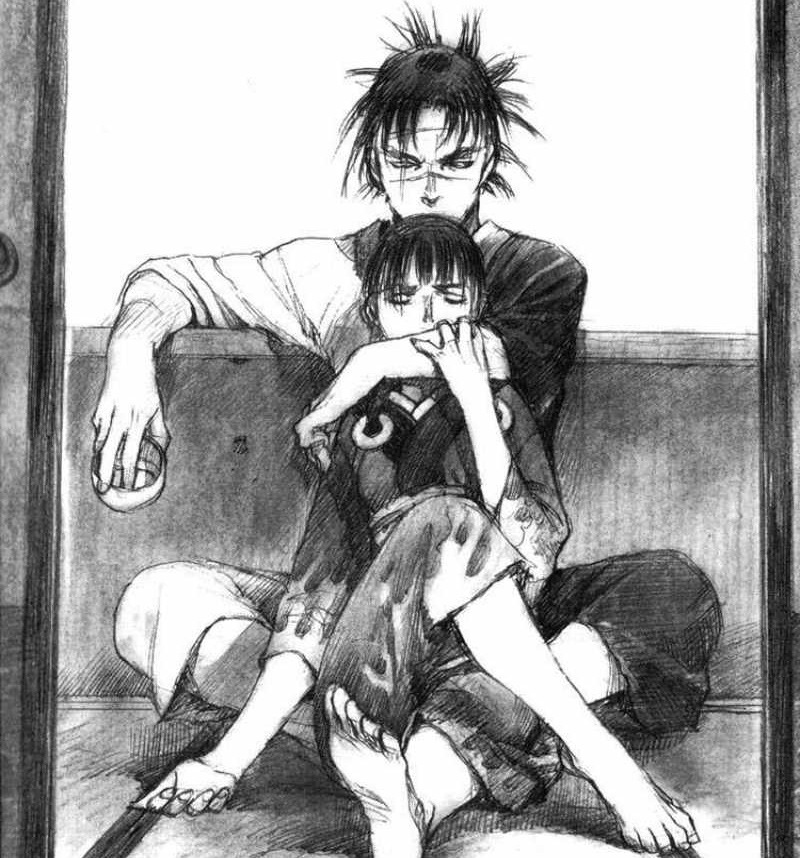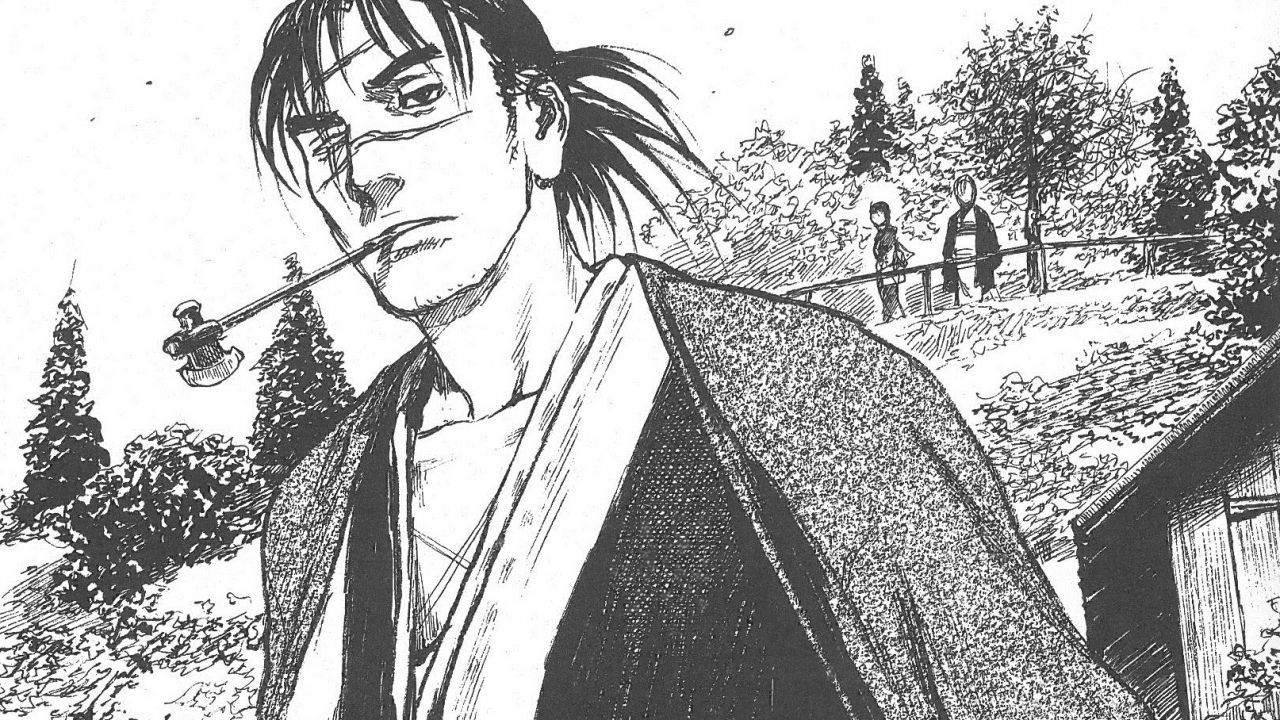Blade of the Immortal
General Overview
“Blade of the Immortal” is a manga written and illustrated by Hiroaki Samura, first published in 1993 and concluded in 2012. This work is considered a masterpiece of the seinen genre for its profound exploration of complex themes and its unique artistic style. The story follows the journey of Manji, a cursed samurai granted immortality, and the young Rin Asano, who seeks revenge for the death of her parents.
Manji has committed many crimes and wishes to rid himself of immortality as an act of redemption. To achieve this, he must kill 1,000 evil men. During his journey, he meets Rin, determined to avenge her family killed by the Ittō-ryū clan. Together, they face formidable enemies and moral challenges that test their determination and sense of justice.
In addition to the original manga, “Blade of the Immortal” has inspired several adaptations, including two anime series. The first, released in 2008, received mixed reviews for its faithfulness to the original plot. The second series, released in 2019, was enthusiastically received for its closer adherence to the manga and the quality of the animation.
Recently, a sequel titled “Blade of the Immortal – Bakumatsu Arc” has been published. This new chapter in the saga continues Manji’s story in a different historical context, offering new adventures and challenges in an era of great change for Japan.
Main Themes
Revenge and Redemption: Revenge is the main driving force of the plot. Rin seeks to avenge her parents’ death, while Manji seeks redemption through his actions. Their alliance highlights the moral complexities of revenge and the possibility of redemption through acts of violence.
Immortality and Mortal Existence: Manji’s immortality is both a blessing and a curse. His inability to die forces him to confront the consequences of his actions in a unique way, exploring the value of life and death. The story examines how immortality affects Manji’s psychology and his perception of the world.
Morality and Justice: “Blade of the Immortal” explores morality through its characters and their actions. Each character has their own ethical code and vision of justice, often conflicting with those of others. The series questions what it means to be just and whether violence can ever be justified.
The Consequences of Violence: Violence is a constant presence in the manga but is never glorified. Samura shows the physical and emotional consequences of fights and killings, highlighting the lasting impact violence has on those who commit it and those who suffer from it.
Strength and Vulnerability: Manji, despite his physical invulnerability, is deeply vulnerable emotionally. Rin, though determined and courageous, often shows her fragility. This duality between strength and vulnerability makes the characters complex and realistic.
Hiroaki Samura’s “Blade of the Immortal” is a work rich in thematic depth, using its fantastical premise to explore universal and timeless issues. The combination of intense action and philosophical reflection makes this manga a compelling and memorable work.
Characters
Manji: The main protagonist of the manga, Manji is a samurai cursed with immortality. This curse was inflicted on him by Yaobikuni, who inserted “sacred blood worms” into his body, which rapidly heal any wound. Manji is tormented by the crimes he has committed in the past and seeks redemption by killing 1,000 evil men. He is a complex character, characterized by a mix of cynicism, wisdom, and humanity. Despite his immortality, Manji constantly faces suffering and loss, making him empathetic toward those he protects.
Rin Asano: The co-protagonist of the story, Rin is a young woman determined to avenge her parents’ deaths at the hands of the Ittō-ryū clan. Despite her age and inexperience in combat, Rin shows unwavering determination and great inner strength. Her relationship with Manji evolves from a simple alliance to a deep bond based on mutual trust and respect. Rin represents growth and resilience, struggling to find a balance between revenge and maintaining her humanity.
Kagehisa Anotsu: The leader of the Ittō-ryū clan, Anotsu is a complex antagonist with a radical vision of the sword and combat. His goal is to revolutionize the world of samurai, challenging traditions and seeking to create a new order. Anotsu is a formidable fighter and a charismatic leader, but his actions often raise questions of morality and ethics. Despite being an enemy to Manji and Rin, his character is nuanced, showing motivations and beliefs that go beyond a simple desire for power.
Makie Otono-Tachibana: Makie is another tragic figure in the story, a highly skilled warrior in the service of Anotsu. Despite her extraordinary combat abilities, Makie is constantly torn between her duty to Anotsu and her desire for a normal life. Her relationship with Anotsu is complex and deeply emotional, adding further layers of internal conflict to her character.
Yaobikuni: Yaobikuni is the nun who cursed Manji with immortality. She is a mysterious and wise figure who has lived for centuries thanks to the “sacred blood worms.” Although she appears rarely, her presence has a significant impact on the story and Manji’s development.
Character Evolution
One of the most fascinating aspects of “Blade of the Immortal” is the evolution of its main characters. Manji, initially cynical and disillusioned, begins to rediscover a sense of purpose and humanity through his relationship with Rin. Rin, in turn, grows from an inexperienced young girl into a strong and aware woman, capable of facing her fears and making difficult decisions.
Even the antagonists, such as Anotsu and Makie, show a depth that makes them more than mere adversaries. Their motivations and internal struggles offer a broader understanding of the series’ themes, such as the nature of revenge, honor, and the quest for personal identity.
“Blade of the Immortal” thus offers a gallery of rich and complex characters, each with their own story and growth trajectory. This detailed characterization helps create a compelling and multidimensional narrative, making Hiroaki Samura’s manga a memorable and engaging work.
Style and Art of Hiroaki Samura
Hiroaki Samura is widely recognized for his unique and distinctive artistic style, which has significantly contributed to the success and iconic status of “Blade of the Immortal.” His approach to visual storytelling and characterization is complex and captivating, making the reading experience immersive and deeply engaging.
Artistic Style
Samura combines various artistic techniques to create a unique visual effect. His work is characterized by:
Extraordinary Detail: Every panel is rich in detail, from the intricate designs of the characters to the elaborate settings. This level of detail not only enriches the visual narrative but also helps to create a believable and vivid world.
Dynamism and Movement: The combat scenes in “Blade of the Immortal” are particularly notable for their fluidity and dynamism. Samura captures movement exceptionally well, making each confrontation visually compelling and intensely engaging.
Contrast of Light and Shadow: Samura masterfully uses chiaroscuro to create depth and atmosphere. The contrast between light and shadow not only emphasizes the characters’ emotions but also helps build a sense of tension and drama.
Brush and Ink Techniques: Samura often employs inking techniques reminiscent of traditional Japanese paintings. The use of the brush gives an organic and fluid touch to his drawings, while the detailed and precise inking adds an additional layer of visual complexity.
Contribution to Atmosphere
Samura’s artistic style is essential in creating the dark and intense atmosphere that permeates “Blade of the Immortal.” The visual representation of violence is raw and realistic, emphasizing the physical and emotional consequences of the battles. At the same time, Samura knows when to use subtlety, allowing moments of quiet and reflection to have a significant emotional impact.
Visual Characterization
The characters in “Blade of the Immortal” are distinguished not only by their personalities but also by their unique designs. Samura pays particular attention to physical details and costumes, reflecting the diverse backgrounds and personalities of the characters. For example:
Manji: With his rugged appearance, scars, and shabby clothing, Manji embodies the experienced and tormented warrior. His facial expressions and posture constantly convey his emotional state and inner conflict. The intricate details of his scars and the wear on his clothing add to his character’s history and complexity, making him appear as a battle-hardened yet deeply flawed individual.
Rin Asano: Rin’s design evolves throughout the series, reflecting her growth and maturation. Initially fragile and insecure, her appearance gradually becomes more determined and confident. Her clothing changes from simple and traditional to more practical and battle-ready attire, symbolizing her transformation from a sheltered girl to a resilient and determined avenger. Her facial expressions also shift from fear and uncertainty to resolve and courage.
Kagehisa Anotsu: Anotsu’s design exudes authority and charisma. His upright posture and elegant attire contrast with his ruthless nature, adding depth to his character. The meticulousness of his clothing, combined with his composed and often cold facial expressions, highlights his disciplined and strategic mind. His visual representation as a well-groomed and dignified leader juxtaposes his brutal actions, enhancing the complexity of his role as an antagonist.
Impact on the Work
Hiroaki Samura’s art is not just an aesthetic component but a fundamental element of the storytelling in “Blade of the Immortal.” His stylistic choices contribute significantly to conveying complex themes and developing characters in ways that transcend words. The fusion of technique and visual storytelling elevates “Blade of the Immortal” to a level of excellence recognized internationally, making it a unique and deeply artistic experience.
The Anime Adaptations of “Blade of the Immortal”
“Blade of the Immortal” has had two anime adaptations, each bringing its own interpretation of Hiroaki Samura’s complex and deep manga to the screen. Both adaptations have their unique characteristics and received varied reactions from audiences and critics.
The First Anime Series (2008)
Overview: The first anime adaptation of “Blade of the Immortal” was produced by Bee Train and aired in 2008. Directed by Kōichi Mashimo, this version covers only a portion of the manga’s story and made several modifications to fit the television format.
Adaptation and Fidelity: This series received mixed reviews regarding its fidelity to the manga. While it retained the main plot elements, some parts were omitted or altered, which disappointed some fans of the original manga. Additionally, the artistic style and animation quality did not always do justice to the complexity and beauty of Samura’s artwork.
Critical Reception: The first anime series was met with mixed reactions. Some viewers appreciated the introduction to the story and characters, while others felt that the anime lacked the depth and intensity of the manga. The focus on certain plot elements and changes made it challenging for some fans to fully appreciate the adaptation.
The New Anime Series (2019)
Overview: The second anime adaptation of “Blade of the Immortal” was produced by Liden Films and aired in 2019. Directed by Hiroshi Hamasaki, this version promised a greater fidelity to the manga and covers a broader portion of the original story.
Adaptation and Fidelity: The new series was well-received for its adherence to the manga. Compared to the 2008 version, the 2019 anime aimed to preserve as many details of the plot and Samura’s artwork as possible. The animation quality was significantly improved, with greater attention to detail and combat scenes that better reflected the manga’s dynamic and intricate style.
Critical Reception: The 2019 series received more positive reviews compared to its predecessor. Manga fans appreciated the faithfulness to the original story and the superior quality of animation. The portrayal of characters and their internal struggles was praised for its depth and authenticity. Moreover, the new series attracted new viewers interested in the complexity of the plot and the visual beauty of the adaptation.
Comparison Between the Two Series
Main Differences: The two anime adaptations of Blade of the Immortal differ significantly in terms of fidelity to the manga, animation quality, and critical reception. The 2008 series took a more liberal approach, while the 2019 series aimed to stay as true as possible to Samura’s original work.
Style and Animation: The 2019 series features more modern and detailed animation, which better captures Samura’s artistic style. The fight scenes are more fluid and dynamic, making the action more engaging for viewers.
Narrative and Character Development: The second series stands out for its more comprehensive character development and more extensive coverage of the manga’s plot. This has allowed for a deeper and more complex representation of the themes and internal conflicts of the characters.
Impact on the Work
The anime adaptations of Blade of the Immortal have helped bring the story of Manji and Rin to a broader audience, each with its own approach and style. While the first series introduced many viewers to Samura’s universe, the second series has solidified the work’s reputation as a genre masterpiece. Both series offer different interpretations of the same story, enriching the overall experience for manga and anime fans.
Introduction to the Sequel
“Blade of the Immortal – The Bakumatsu Arc” is the sequel to Hiroaki Samura’s original manga “Blade of the Immortal.” This new chapter revisits the universe of Manji but is set in a different historical context: the Bakumatsu era, a period of significant change and turmoil in 19th century Japan.
Internal and External Conflicts: The Bakumatsu era is marked by internal conflicts, with the struggle between supporters of the shogunate and reformists, as well as external conflicts, with the entry of Western powers. These conflicts are reflected in the battles that Manji must face, both physically and morally.
Plot of the Sequel
The sequel once again follows the story of Manji, the immortal samurai, who now finds himself in an era of transition and conflict. The Bakumatsu era is characterized by the end of the Tokugawa shogunate and the beginning of the Meiji era, a time when Japan opens up to the outside world and begins a rapid process of modernization.
Manji, having lived for centuries through wars and periods of peace, must now face new challenges in a rapidly changing world. His adventures lead him to confront new enemies and allies as he navigates through the political and social turmoil of the time.
Themes and Motifs
Change and Modernization: One of the main themes of the sequel is the clash between tradition and modernity. Manji, a man of the past, must adapt to the rapid changes transforming Japan. This theme reflects the challenges and opportunities that come with progress and innovation.
Continuity and Evolution: Although the context is different, the sequel retains many elements that made the original manga so beloved. Manji’s quest for redemption continues, as does his commitment to protecting the innocent and fighting against injustice. However, the sequel also introduces new dynamics and developments that further enrich the character and the plot.
Characters in the Sequel
In addition to Manji, the sequel introduces a range of new characters, each with their own motivations and stories. Some of the main characters include:
Rin Asano: Although her role may vary, Rin continues to be an important presence in Manji’s life. Their relationship evolves with the passage of time and historical changes, offering new dimensions to their dynamic.
New Enemies and Allies: The sequel features a variety of new characters, from reformists seeking to modernize Japan to conservatives who want to maintain the status quo. Each character introduces new challenges and opportunities for Manji, enriching the plot with complexity and intrigue.
Critical Reception
“Blade of the Immortal – Bakumatsu Arc” has been enthusiastically received by fans and critics alike. Many have praised Hiroaki Samura’s ability to maintain the essence of the original manga while exploring new themes and settings. The quality of storytelling and art remains high, and the sequel offers a fresh perspective on Manji’s journey and the challenges he faces in a rapidly evolving world.
Conclusion
“Blade of the Immortal – Bakumatsu Arc” represents a natural evolution of the “Blade of the Immortal” saga, taking readers into a new chapter of Manji’s life. With its combination of continuity and innovation, the sequel keeps the interest in Hiroaki Samura’s world alive and demonstrates the enduring relevance and appeal of his work.
Legacy of “Blade of the Immortal”
Hiroaki Samura’s “Blade of the Immortal“ has left an indelible mark on the landscape of manga and anime, distinguished by its profound storytelling, complex characters, and extraordinary art. Since its first publication in 1993, the manga has garnered a cult following and received numerous accolades, solidifying its status as a classic of the seinen genre.
Impact on Popular Culture
Influence on Manga and Anime: “Blade of the Immortal” has inspired many artists and creators in the fields of manga and anime. The blend of philosophical themes, intense action, and detailed artwork set new standards for the genre. Samura’s work demonstrated that a manga could explore complex themes such as redemption, revenge, and morality without sacrificing entertainment or visual quality.
Adaptations and Recognitions
Anime Adaptations: “Blade of the Immortal” has seen two anime adaptations, each bringing the story to life in distinct ways. The 2008 series offered an initial taste of Samura’s world, while the 2019 series provided a more faithful and comprehensive adaptation of the manga.
Live-Action Film: In addition to the anime adaptations, “Blade of the Immortal” inspired a live-action film released in 2017, directed by Takashi Miike. The film introduced the story to an even wider audience and further solidified the significance of Samura’s work in both Japanese and international pop culture.
Lasting Legacy
Universal Themes: One of the most remarkable aspects of “Blade of the Immortal” is its ability to tackle universal themes that resonate with readers across generations and cultures. The struggles of Manji and Rin, though rooted in the historical context of feudal Japan, touch on emotional and philosophical chords that are relevant in the modern world.
Reflections on Violence and Redemption: The way “Blade of the Immortal” explores the consequences of violence and the possibility of redemption has influenced many other works in the world of manga and anime. Samura’s work encourages readers to reflect on their conceptions of justice and morality, moving beyond the simple dichotomy of good versus evil.
Impact on the Fandom
Fan Community: “Blade of the Immortal” has cultivated a robust fan community that continues to grow and support the work. Online discussions, fan art, and theories showcase the enduring impact and affection for the saga. Comic conventions and events often feature panels and discussions dedicated to “Blade of the Immortal,” demonstrating its ongoing relevance.
Influence on New Creators: Many emerging authors and artists cite “Blade of the Immortal” as a fundamental source of inspiration for their work. Samura’s approach to visual storytelling and character development has paved new paths for creative exploration in the manga industry.
Recommendations
For Manga Readers: If you’re a manga enthusiast who loves deep and visually stunning stories, “Blade of the Immortal” is a must-read. The combination of gripping plot, complex characters, and exceptional artwork makes this manga an essential addition to your collection.
For Anime Viewers: The anime adaptations offer an excellent introduction to the series, with the 2019 version particularly recommended for its fidelity and visual quality. The live-action film is also a good starting point for those who prefer this format.
For New Readers: If you’re new to the world of manga, “Blade of the Immortal” is an excellent starting point. Its compelling narrative and breathtaking art will introduce you to the many layers of depth that manga can offer.
Personal Impact
“Blade of the Immortal” is an exciting and reflective journey that leaves a lasting impression. The story of Manji and Rin, with their struggles and personal growth, resonates with universal themes of humanity and redemption. Samura’s work invites readers to reflect on their own lives and choices, making “Blade of the Immortal” not just a manga to read, but an experience to live.
As always, thank you for sticking with me until the end. If you enjoyed this brief review and want to purchase Blade of The Immortal, you can find it at the best price by clicking on this link. By doing so, you’ll support my work and the dream that is Digidreamers, at no extra cost to you. See you next time!

